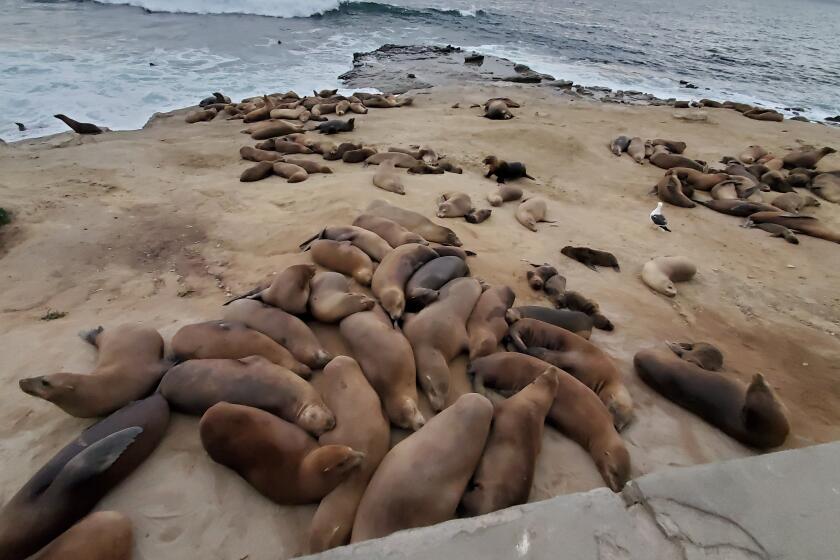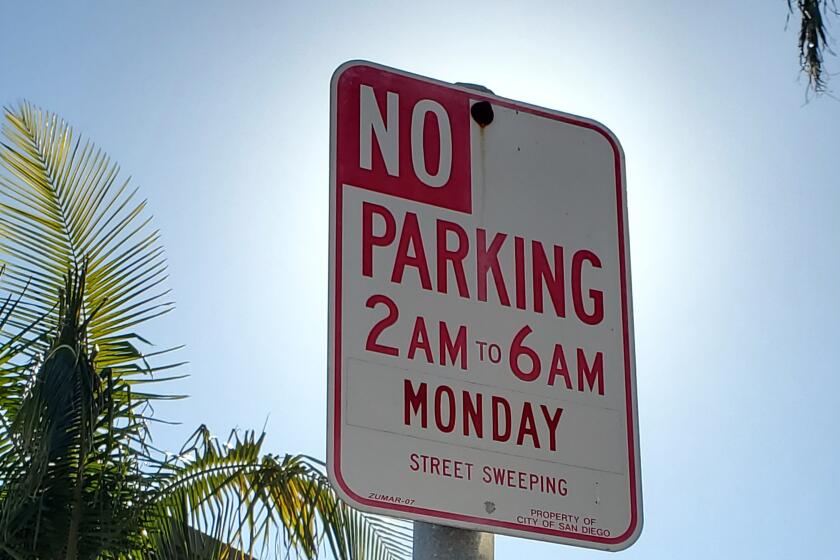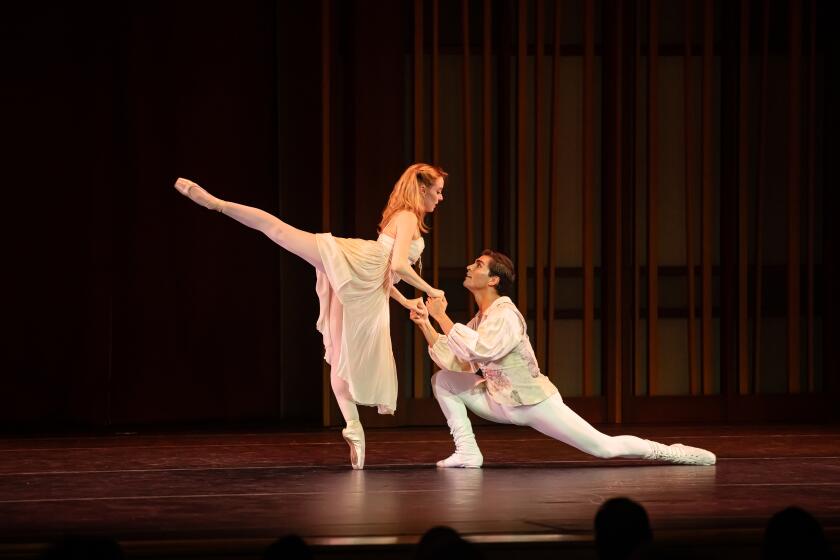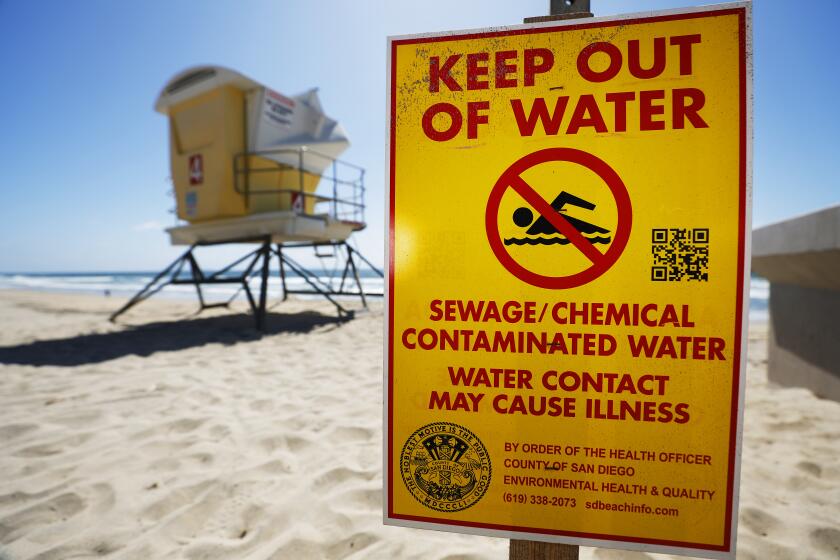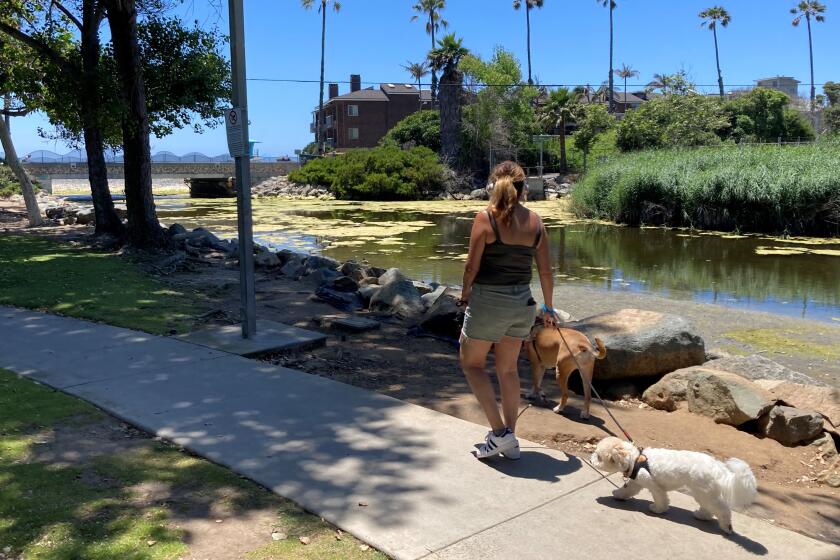Study by La Jolla scientists shows how strong-swimming plankton create red tides

‘The Michael Phelps of plankton’ can swim vertically and quickly between sunlight at the ocean surface and nutrients at the bottom to fuel their growth and enable them to congregate in large numbers
Validating a 50-year-old hypothesis, scientists at the University of California San Diego’s Scripps Institution of Oceanography and Jacobs School of Engineering in La Jolla say they have pinpointed how a plankton species thrives to create algae blooms that lead to red tides like the one La Jolla saw in 2020.
Those events — which result in rust-colored waters during the day and bioluminescence at night — are caused by high densities of a microscopic marine algae called Lingulodinium polyedra, or L. polyedra, a type of plankton common in Southern California.
But how the plankton are able to congregate in such large numbers and dominate other species had not been confirmed.
One theory originally presented by Scripps biological oceanographer Richard Eppley was that their ability to swim vertically enabled them to reach the sunlight needed for photosynthesis and energy and to access nutrients on the ocean floor to fuel their growth. Extensive lab research was conducted to support the idea, but it hadn’t been tested in the field until the 2020 red tide.
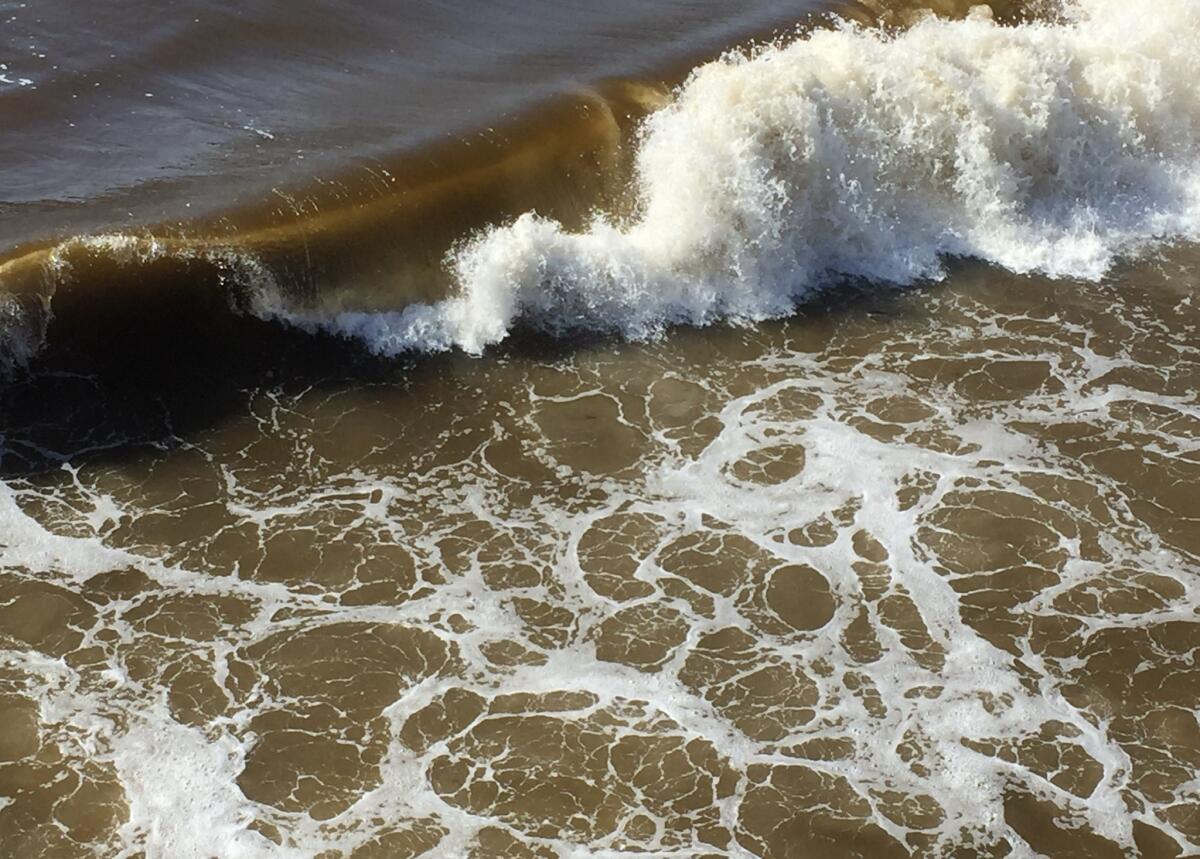
Looking to get answers, the UC San Diego research team used an autonomous, ocean-wave-powered vertical profiling system developed at Scripps Oceanography to continuously measure physical and biochemical conditions from the sea surface to the floor, reaching a depth of 300 feet. The instrument, known as a Wirewalker, moves up and down a mooring line attached to a buoy while taking measurements of temperature, salinity, depth, sunlight levels, chlorophyll fluorescence and nitrate concentrations.
The researchers also captured near-surface images of the algae bloom using a robotic microscope installed on an offshore mooring.
The team documented a large population of the plankton making the downward journey at night, though a portion remained near the surface, leading to nighttime displays of bioluminescence, when the organisms emit a neon blue glow. The study authors found that the vertical migration enabled the plankton to outgrow their non-mobile competitors, including other species of phytoplankton.
Thus the study not only confirmed L. polyedra’s ability to swim vertically but also showed they are “the Michael Phelps of plankton,” said oceanographer Drew Lucas, senior author of the paper and an associate professor at Scripps Oceanography.
“Their swimming is very particular because they need to be near the surface to access sunlight. However, they also need other things to grow, like chemicals and nutrients that are not near the surface,” Lucas said. “So they swim up during the day and down at night. There is quite a distance between the two.”
For microscopic plankton with a diameter comparable to the width of a human hair, the trek takes about 18 hours at a rate of about 10 body lengths per second.
“They are actually quite remarkable swimmers,” Lucas said. “We think of animals that swim well, like a mako shark that can swim up to 40 mph, but only for a short time to chase and catch prey. But these (plankton) swim at their rate for hours. It’s incredible.”
Lucas and former graduate student Bofu Zheng led the work alongside several colleagues, showing that the plankton’s swimming ability enables them to thrive and congregate, which in turn creates dense algae blooms that lead to red tides.
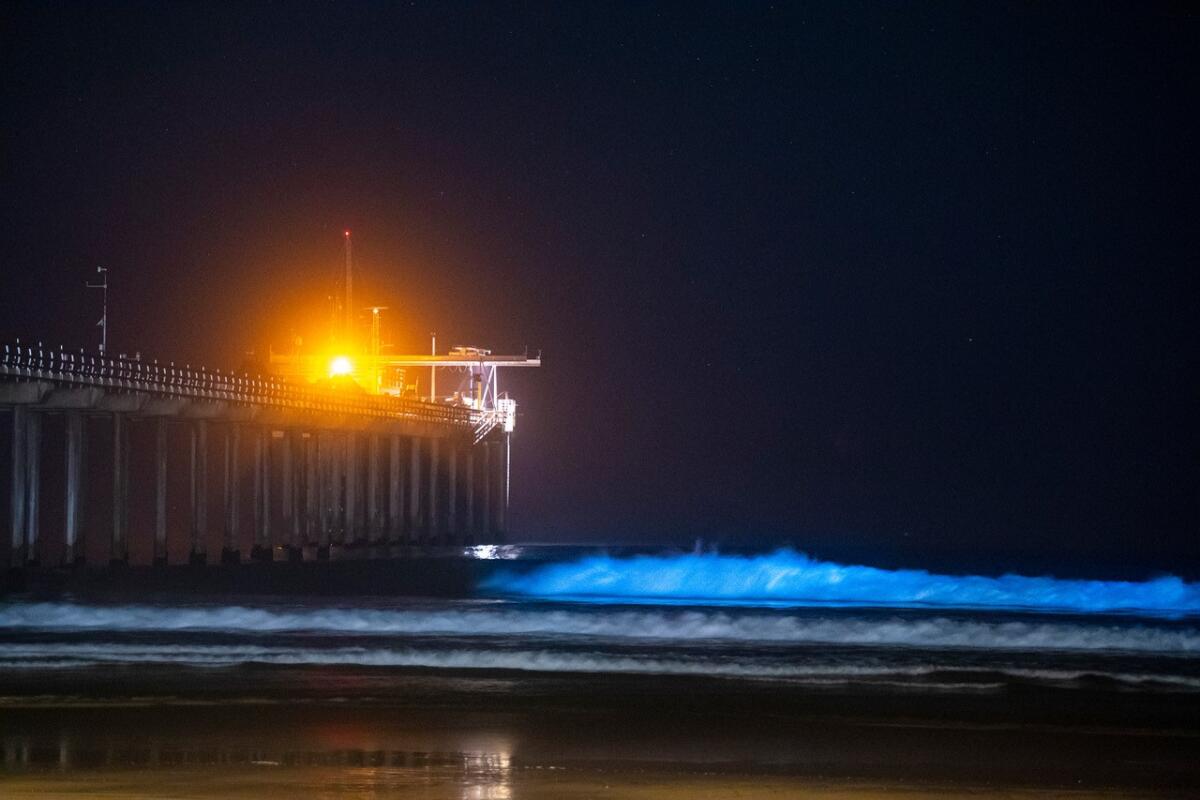
Algae blooms caused by plankton coming together have been documented off Southern California for at least 120 years. However, when an algae bloom or a red tide gets to be very large, there can be negative impacts on the ecosystem.
“In general, the existence of this event is part of what we experience in the coastal ocean environment and isn’t that big an impact on human health,” Lucas said. “However, at times the tide gets so intense, there will be so many of these [plankton] cells that it can cause the bloom to crash and die. When that happens, that decomposition can decrease oxygen levels in the ocean.
“These organisms, although very tiny, can really impact the ecosystem to historic levels when they get to these levels of abundance.”
This summer, a toxic bloom of algae called pseudo-nitzschia was believed to be behind the deaths of hundreds of California sea lions and dozens of dolphins due to poisoning by a neurotoxin called domoic acid.
The 2020 red tide that Lucas and the team studied “was the strongest one in terms of abundance that we have had,” and its impact on the ecosystem was significant.
“Fish were dying due to lack of oxygen,” Lucas said. “It changed the PH levels and the chemical composition of the ocean in a way that was not good.”
Lucas said he hopes the study will contribute to greater understanding of such events and help create a prediction model.
Bradley Moore, a professor of marine biology, marine chemistry and geochemistry at Scripps Oceanography, is working on a way to predict algae blooms as part of a study funded by the National Oceanic and Atmospheric Administration.
Professor Bradley Moore wants to provide fishermen, governments and others a heads up when toxic algae may impact marine animals.
“If you are a fisherman, knowing whether there will be a toxic algae bloom can be helpful,” Moore told the La Jolla Light in July. “There are big consequences to these blooms. If a tornado is coming, I’d want to know if it is coming to my town and make informed decisions.”
“As San Diegans, we rely on the ocean for so many things, from recreation to fishing,” Lucas said. “It’s a big part of who we are, and these events are so major to understanding our coastal environments. If you want to predict whether there is going to be a red tide, a harmful algae bloom or more of them in the future in the face of changing conditions, you need to understand the whole story. We’re trying to add to that knowledge.”
Get Essential San Diego, weekday mornings
Get top headlines from the Union-Tribune in your inbox weekday mornings, including top news, local, sports, business, entertainment and opinion.
You may occasionally receive promotional content from the San Diego Union-Tribune.
